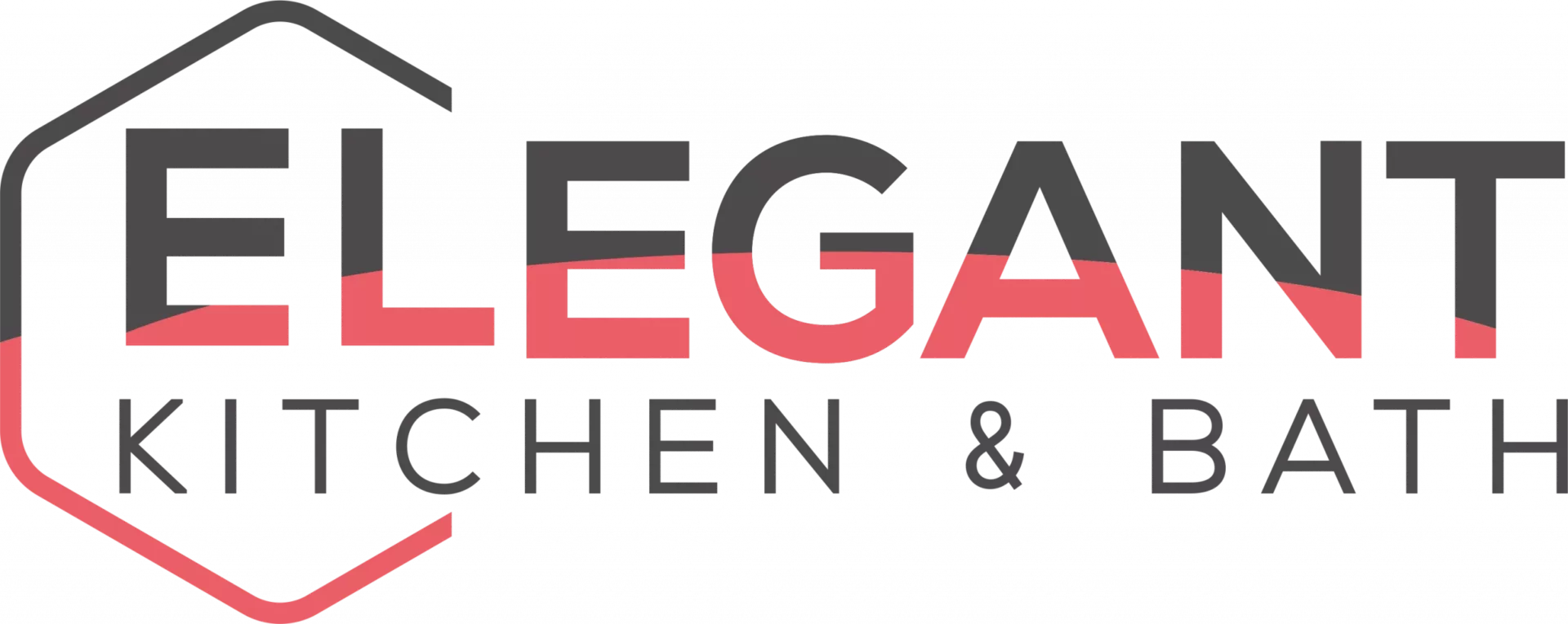Kitchen design for your home combines creativity and practicality, crafting a space that’s as beautiful as it is functional. The journey to your dream kitchen starts with a deep dive into your unique space and needs, followed by navigating the financial landscape to set a feasible budget.
With the myriad design styles, materials, and appliances available, making these selections can feel exhilarating yet overwhelming. Keep reading to unlock expert insights and tips on bringing your custom kitchen vision to life.
Key Takeaways for Right Custom Kitchen Design
1. Understanding your kitchen’s unique space and specific needs is crucial in achieving a functional and aesthetically pleasing design.
2. Establishing a thoughtful budget that includes costs for design, materials, labor, and appliances is paramount for a successful renovation project.
3. To ensure aesthetic cohesion throughout your home, align your kitchen’s design style with the home’s overall theme.
4. Choosing durable materials and finishes for your kitchen allows for longevity and ease of maintenance.
5. Adequate communication with professional designers or architects is vital to translating your vision to reality and ensuring a harmonious working relationship.
6. Selecting the right appliances that balance functionality with aesthetic appeal is integral to kitchen design.
7. Consider future upgrades or technological integrations in your initial kitchen design for a future-proof and efficient kitchen.
8. Your chosen materials and finishes warranty and maintenance requirements should be considered to ensure sustainability and practicality in your kitchen design.
9. Identifying your storage needs and the multifunctionality of modern kitchens helps shape the design choices for creating functional and organized spaces.
10. Assessing the natural light and existing layout can help enhance the kitchen’s mood, functionality, and energy efficiency.
Understanding Your Space and Needs for a Custom Kitchen
Designing a custom kitchen requires thoroughly evaluating the homeowner’s unique needs and space. Storage, functionality, and natural lighting are crucial factors in the design process. The kitchen should be equipped to handle daily meal preparation and serve as a hospitable setting for gatherings. Personalizing the design ensures the final space is aesthetically pleasing and aligned with the homeowner’s lifestyle and preferences.
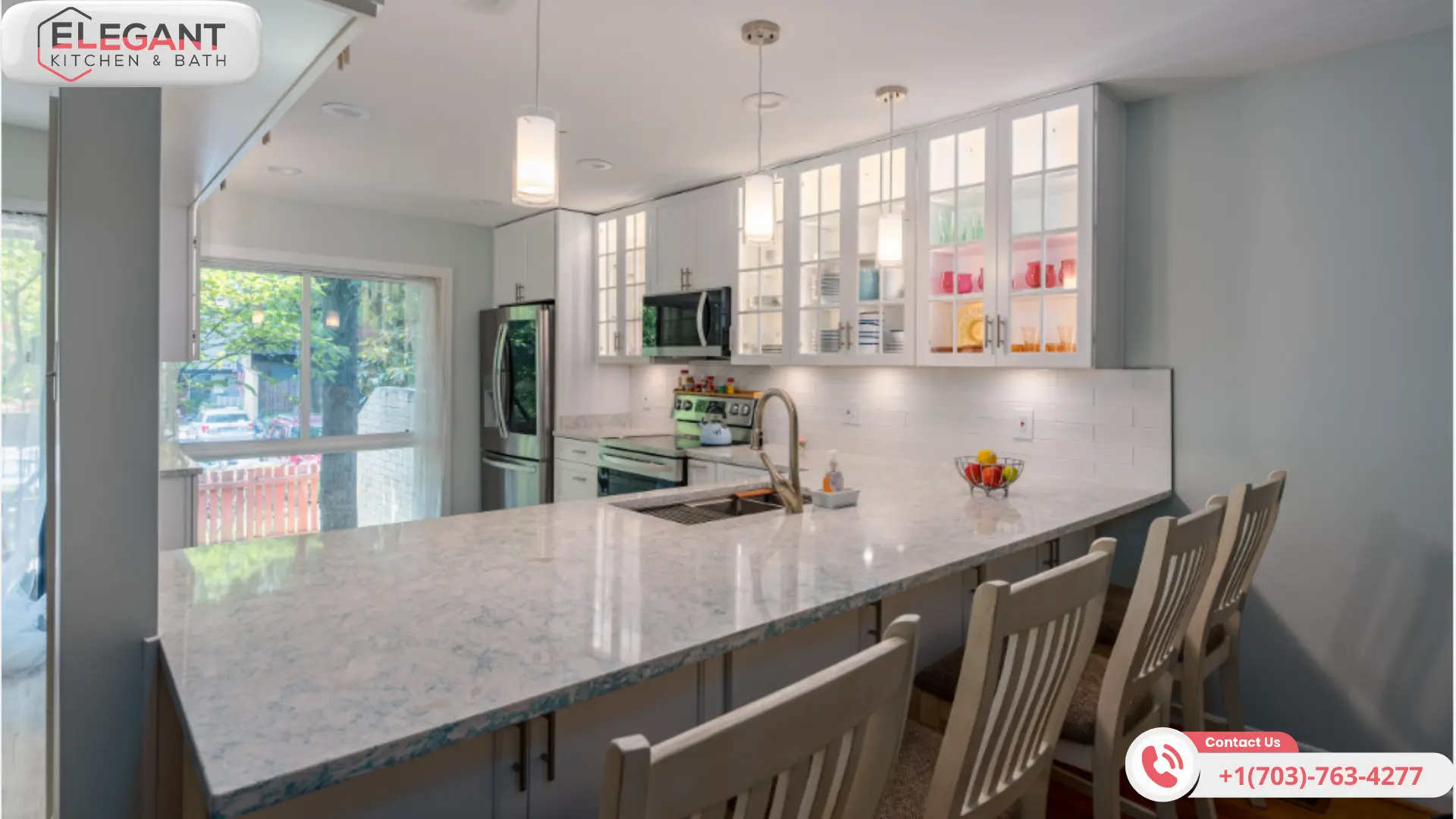
Evaluate the Size and Shape of Your Kitchen Area
Accurately measuring every aspect of the space and understanding architectural features’ size, shape, and placement is crucial when redesigning a kitchen. These fundamental dimensions allow for the creation of design possibilities that enhance functionality and aesthetic appeal. A meticulous approach to planning ensures that new elements fit physically and harmonize with the existing architectural features.
By considering the placement of windows, doors, and any structural beams or columns that could impact the layout, we can guide decisions about cabinetry, appliance placement, and overall design. Understanding the standard dimensions and ergonomic principles further ensures the design optimally utilizes the available space. With the integration of form and function, we can create a beautiful and practical kitchen perfectly tailored to the home’s unique character.
Identify Your Storage and Functionality Requirements
Intelligent storage solutions and multifunctionality are critical aspects of designing a custom kitchen. Cabinets that combine aesthetic appeal with practical utility create a multifunctional, streamlined, and visually appealing space. Incorporating hidden pantries and custom-built islands adds value by maximizing usable space within the kitchen, making it perfect for cooking and socializing. Focusing on these aspects tailors the kitchen to the homeowner’s lifestyle, ensuring it supports daily needs efficiently.
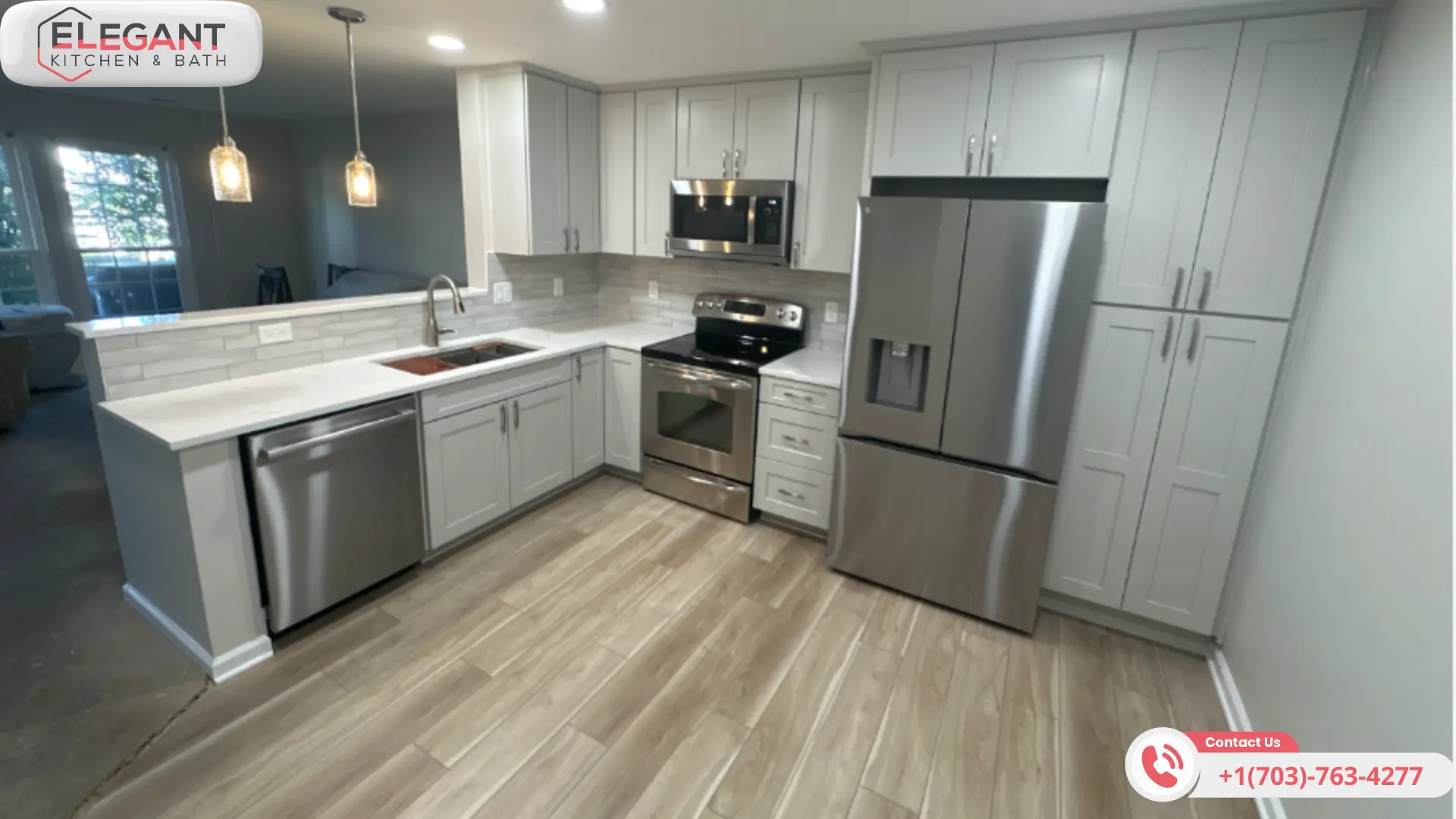
Consider the Natural Light and Existing Layout
Assessing how natural light plays within the space transformed my understanding of the kitchen’s dynamics: it became clear that harnessing the sun’s path could dramatically influence the mood and utility of my cooking haven. Positioning work areas to take advantage of morning or evening light boosts energy efficiency and paints my culinary activities in the best possible light.
| Time of Day | Light Quality | Activity Area |
|---|---|---|
| Morning | Soft & Inviting | Breakfast Nook |
| Midday | Bright & Energetic | Prep Station |
| Evening | Warm & Cozy | Dining Area |
By analyzing your kitchen’s current layout, you identified ways to optimize its flow and functionality without making any drastic changes. Simple adjustments, such as relocating the dishwasher closer to the sink or installing a cooktop with an integrated ventilation system, can significantly impact the room’s ergonomics. With a strategic approach, you could seamlessly blend your kitchen’s existing character with new, efficient designs. By taking the time to evaluate the space and make thoughtful changes, you created a kitchen that looks great and works perfectly for you.
Define Your Cooking and Entertaining Style
Defining my cooking and entertaining style was akin to sketching the soul of my kitchen: it had to reflect both my culinary passion and my warmth in hosting gatherings. The kitchen’s layout and amenities are needed to support these diverse scenarios, from intimate family dinners to lively social events.
| Type of Gathering | Essential Features | Preferred Atmosphere |
|---|---|---|
| Family Dinners | Large, welcoming island with seating | Warm and Comfortable |
| Social Events | Open plan for easy circulation, bar area | Lively and Inviting |
Considering the energy and dynamic of hosting, I imagined a versatile kitchen that could adapt: an easily accessible wine cooler for pleasant evenings and a multifunctional multifunctional to quick meals and elaborate feasts. This foresight was driven by the desire to create a kitchen and craft an experience centered around communion, taste, and the joy of sharing meals.
Setting a Budget for Your Custom Kitchen Project
As you begin your journey toward achieving the perfect custom kitchen design, you will quickly realize the importance of establishing a well-planned and thoughtful budget. To ensure you have a comprehensive understanding of the current market’s pricing, you will invest considerable time and effort in researching the average costs associated with custom kitchens. You will delve deep into the details, analyzing the prices of various materials, appliances, and labor costs to ensure that my budget is realistic and that I can make informed decisions about the design and style of my dream kitchen.
This exploration extended beyond mere aesthetics, encompassing materials, labor, and essential appliances, all of which play significant roles in the financial blueprint of a kitchen renovation. Recognizing the finite nature of resources, I determined my financial boundaries early on, setting clear priorities to guide my spending.
Amidst these fiscal considerations, exploring financing options or savvy savings strategies emerged as a critical step, presenting avenues to achieve my dream kitchen without compromising my financial health. This holistic approach to budgeting grounded my design ambitions in reality and paved the way for a project that balances ambition with practicality.
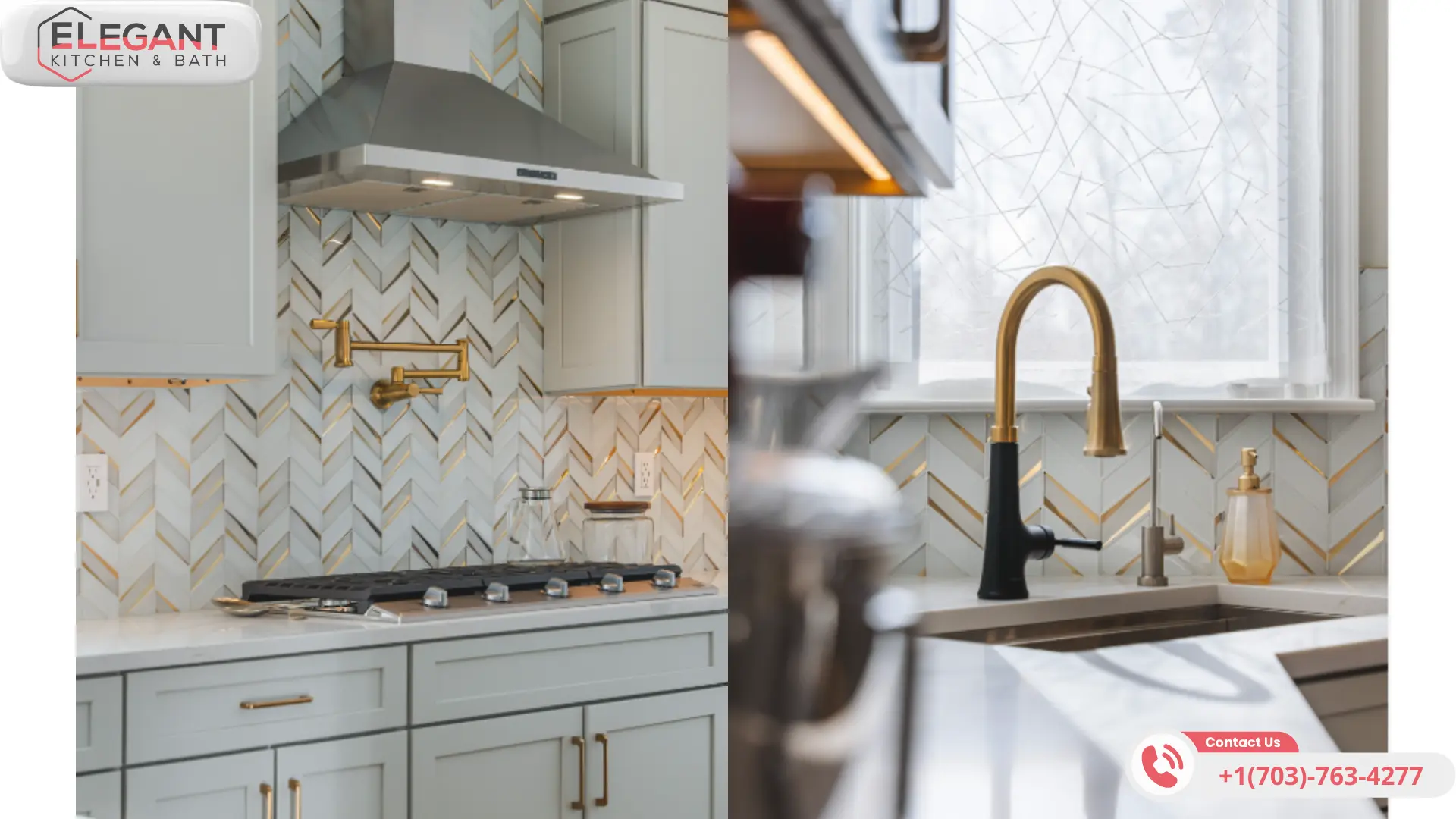
Research Average Costs for Custom Kitchen Designs
Initiating the quest to pinpoint the ideal custom kitchen design begins with a realistic appraisal of potential expenses: it’s about achieving a balance between dreams and the ledger. Tapping into resources like the National Association of Home Builders or platforms like Houzz offered me a comprehensive overview, highlighting that kitchen renovation costs vary widely based on geography, materials, and design complexity.
| Design Element | Material | Average Cost |
|---|---|---|
| Countertops | Quartz | $3,000-$7,500 |
| Cabinetry | Custom Wood | $5,000-$20,000 |
| Flooring | Hardwood | $4,000-$10,000 |
Armed with understanding and specific figures, my endeavor transitioned from abstract planning to strategic financial mapping. This foundational knowledge empowered me to engage in informed dialogues with potential contractors, ensuring my budget was respected and enabling me to make adjustments as necessary without compromising the essence of my vision.
Factor in Expenses for Materials, Labor, and Appliances
Leafing through the myriad options for materials, from the sleek elegance of quartz countertops to the timeless charm of hardwood floors, I was face-to-face with the reality that quality impacts price significantly. Deciding on appliances was another story; the dream of a high-end refrigerator or an energy-efficient dishwasher meant balancing desire with the dollars, ensuring each choice was a step towards aesthetics and functionality.
Conversations with kitchen remodeling contractors brought another dimension to light – the cost of skilled labor. It was clear that the expertise of a seasoned kitchen remodel contractor or a custom cabinet designer wasn’t just desirable but necessary to bring the vision of my custom kitchen to life. These discussions served as a reminder of the importance of factoring in labor costs early, safeguarding against unexpected expenses that could derail the project’s financial plan.
Determine Your Financial Limits and Priorities
Setting precise financial boundaries was a task I approached with a clear head and a detailed plan, recognizing that a well-defined budget is the backbone of a successful custom kitchen project. I weighed my desires against my financial capacity, leading me to prioritize aspects of the design that held the most value to me, whether it was investing in energy-efficient appliances or splurging on a marble countertop.
Equally important was my commitment to reserve a portion of my budget as a contingency fund. This preparedness for unforeseen costs, from delivery delays to last-minute changes in design, ensured that my kitchen remodeling journey would be as stress-free as possible, keeping financial strain at bay.
Explore Financing Options or Savings Strategies
Investigating various financing options became a pivotal step in my kitchen renovation journey, leading me to consider loans and lines of credit offered by financial institutions such as credit unions and banks. This exploration allowed me to discover financial products with favorable interest rates and terms aligned with my project timeline, ensuring I could undertake the renovation without straining my savings.
Simultaneously, I honed in on practical savings strategies, such as taking advantage of seasonal sales for appliances and materials or utilizing cashback offers and gift cards to procure high-quality items at a reduced cost. This approach helped me stretch my budget further, allowing me to allocate funds toward higher-priority aspects of my custom kitchen design without compromising quality or aesthetics.
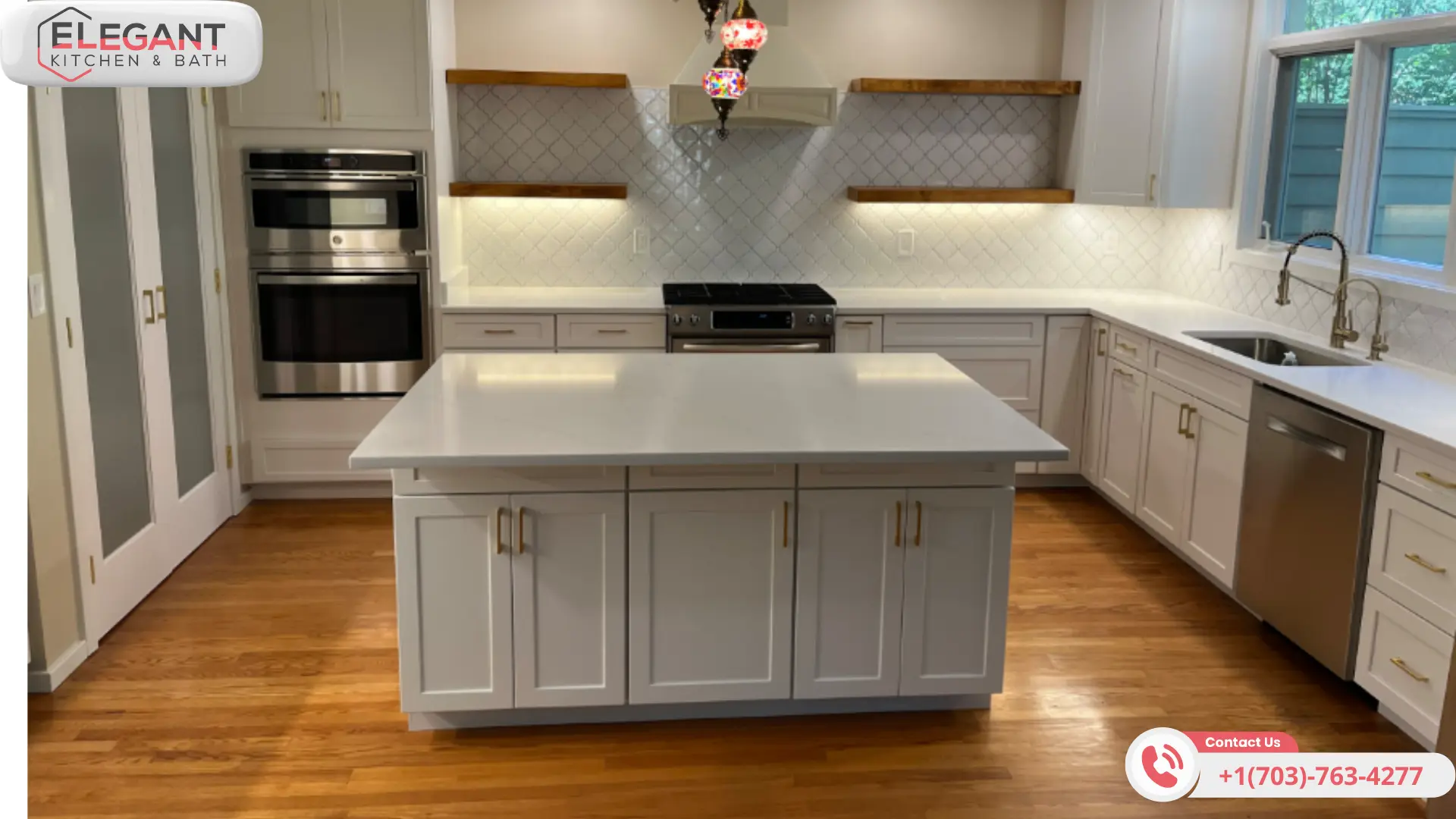
Choosing the Right Kitchen Design Style for Your Home
As we ventured into the realm of custom kitchen design, our primary focus shifted to determining the style that resonated most profoundly with our taste and our home’s architectural nuances.
Understanding that kitchens are not merely spaces for culinary endeavors but also a significant aspect of our home’s overall aesthetic and mood, we embarked on a journey to familiarize ourselves with various kitchen design styles. It became clear that matching the kitchen’s style with our home’s overarching theme was about achieving a cohesive look and creating a space that embodies a timeless charm and warm ambiance.
As we pondered potential styles’ longevity and visual appeal, the importance of partnering with a skilled designer became undeniable. This collaboration promised to refine our vision and transform it into a cohesive, functional, and beautiful kitchen space that perfectly aligns with our lifestyle and aesthetic preferences.
Get Familiar With Different Kitchen Design Styles
Diving into the diversity of kitchen design styles was like opening the door to an array of possibilities, from the sleek, minimalistic lines of a modern design to the cozy, elaborate details of a traditional setup. Each style spoke a different language, yet the ultimate goal remained the same: to find a match that resonates with my personality and complements the architectural essence of my home.
Explorations will help you appreciate the unique characteristics that define popular kitchen styles. Modern kitchens boast clean, straightforward designs emphasizing functionality, while Traditional styles invoke a sense of warmth with their classic details and ornate fixtures. It wasn’t just about picking a style off the shelf; it was about imagining my life moving within these spaces, cooking, entertaining, and making memories.
| Design Style | Key Characteristics | Best For |
|---|---|---|
| Modern | Sleek lines, minimalistic, function-forward | Those who love a clean, clutter-free aesthetic |
| Traditional | Ornate details, warm colors, classic elements | Those seeking a cozy, timeless atmosphere |
| Farmhouse | Rustic elements, open shelving, apron sinks | Those aiming for a charming, country-inspired vibe |
| Industrial | Raw materials, exposed pipes, functional pieces | Those who prefer a bold, edgy look with historical nuances |
Match the Kitchen Style With Your Home’s Overall Theme
Matching the kitchen style with my home’s overall theme required deep diving into the architectural essence and existing decor. I needed to select a design that seamlessly blends with the house’s character, ensuring the transition between spaces feels natural and harmonious.
I leaned into the nuances of my home’s architecture, drawing inspiration from its lines, textures, and color schemes. This careful consideration ensured the kitchen wouldn’t stand out as an isolated project but as a thoughtful extension of my home’s existing aesthetic, adding to its charm and cohesion.
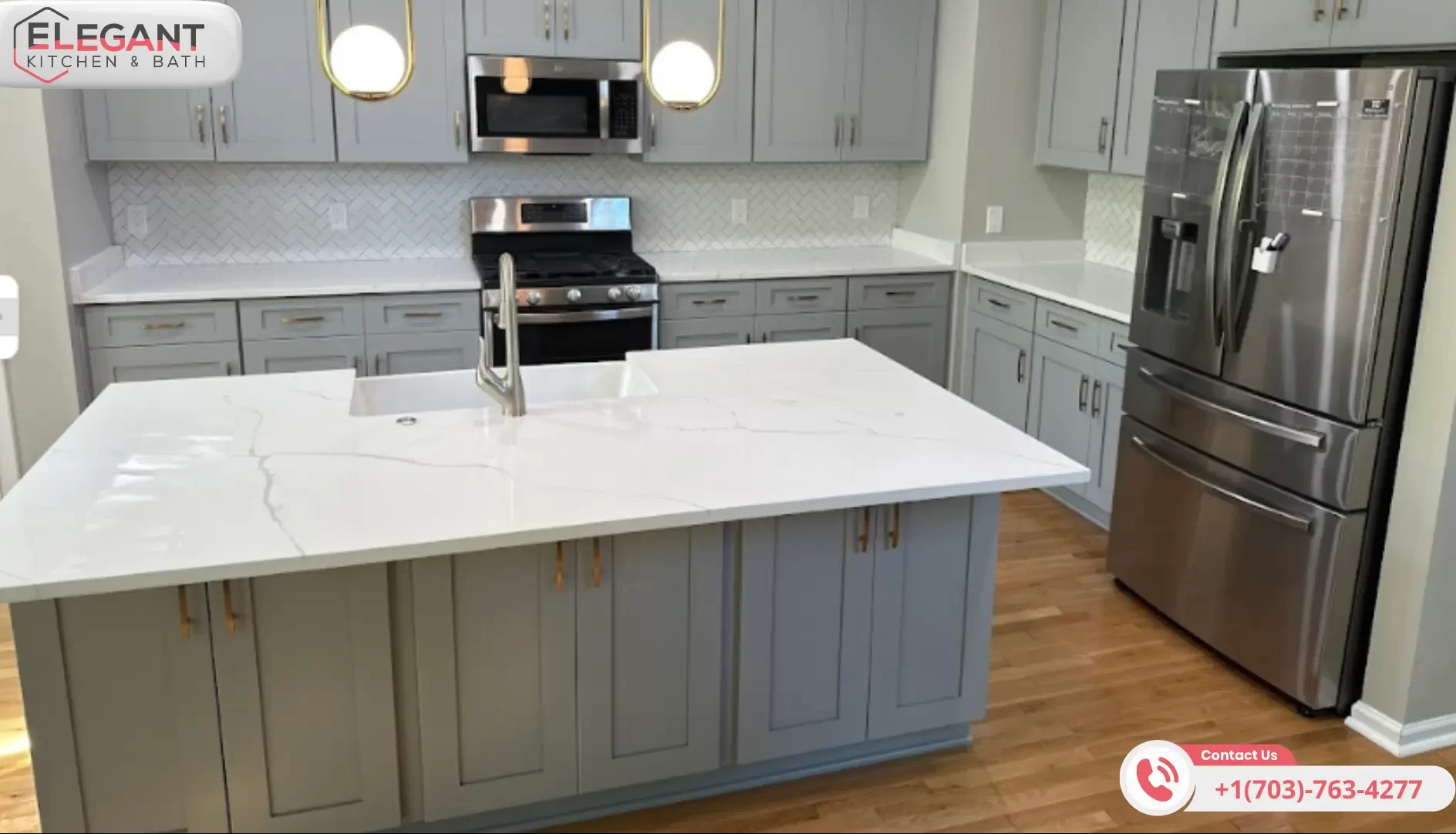
Consider the Longevity and Appeal of the Chosen Style
Reflecting on the longevity and appeal of my chosen kitchen style became a cornerstone of decision-making. I sought a timeless design that would endure the ebbs and flows of trends and maintain its allure and functionality, ensuring my investment would hold its value and satisfaction for years.
I envisioned a kitchen that would grow with my family and adapt to our evolving tastes while retaining its core aesthetic beauty. This foresight guided me toward selecting materials and designs known for their durability and classic appeal, securing my custom kitchen’s enduring charm and efficiency.
Consult With a Designer to Refine Your Vision
Enlisting the expertise of a designer became a pivotal point in my journey to realizing the perfect custom kitchen. Their seasoned eye could take my scattered ideas and coalesce them into a beautiful and practical design. They bridge the gap between dreaming and doing.
Collaborating with a designer opened avenues I hadn’t considered, from innovative storage solutions to achieving the perfect balance between aesthetics and functionality. This guidance was instrumental in avoiding common pitfalls and ensuring every decision contributed to a cohesive and enjoyable space.
| Design Aspect | Designer’s Input | Outcome |
|---|---|---|
| Storage Solutions | Innovative Ideas | Maximized Functionality |
| Material Selection | Balance Aesthetics and Durability | Timeless Beauty |
| Space Utilization | Custom Layouts | Enhanced Flow and Usability |
Selecting Materials and Finishes That Last
Moving on to selecting materials and finishes that stand the test of time, I understood this is a pivotal point in the custom kitchen design process.
It’s not just about choosing components that look good on day one; it’s about selecting materials for countertops and cabinetry that hold up under the rigors of daily use without sacrificing the vision I have for my space. Similarly, the finishes I opt for need to resonate with my design style and offer the durability and ease of maintenance I value.
Balancing cost and quality becomes a delicate dance, especially when considering flooring, backsplashes, and hardware, as each element contributes to the overall aesthetic and functionality of the kitchen.
Moreover, checking warranty and maintenance requirements offers an additional layer of security in my choices, ensuring each aspect of my kitchen’s design is as enduring as it is enchanting.
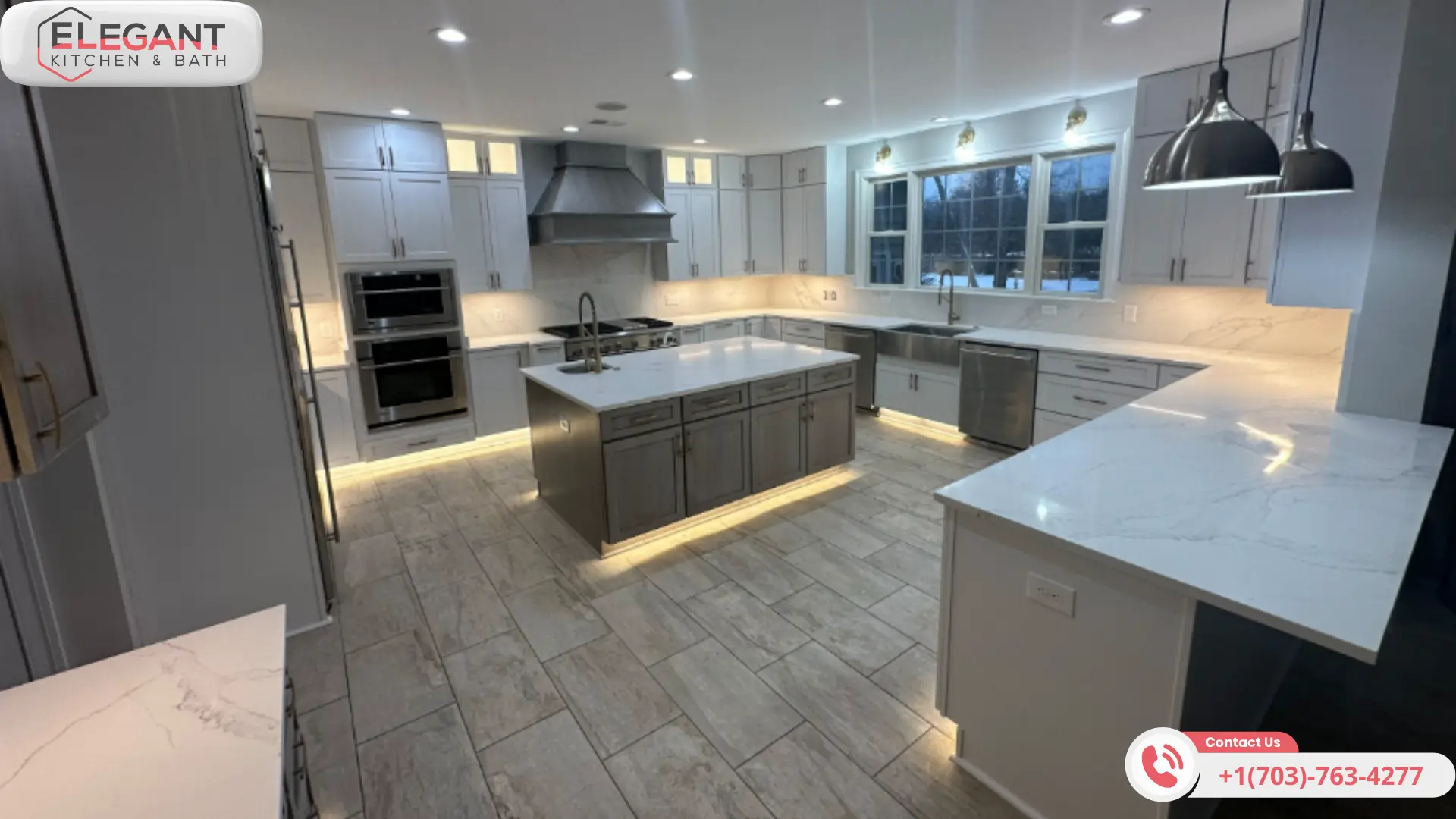
Learn About Durable Materials for Countertops and Cabinetry
Delving into selecting materials for countertops and cabinetry, I became acutely aware of the balance between aesthetic appeal and long-term durability. Quartz and granite emerged as standout countertops, offering resilience against scratches and heat and a timeless beauty that complements various design aesthetics. Solid wood stood the test of time for cabinetry, promising an enduring look and feel alongside the practical advantage of repairability, should it ever be necessary.
As I further explored options, the material’s resistance to moisture, especially for cabinetry near the sink and dishwasher, became a top consideration. I discovered that materials such as stainless steel and high-pressure laminate offer superb moisture resistance, ensuring the longevity and maintenance ease of the kitchen’s busiest areas. These discoveries empowered me to make informed decisions, providing the heart of my home would be welcoming and withstand the demands of daily life.
Choose Finishes That Complement Your Design Style
Settling on finishes that mirror my broader vision for my custom kitchen design became an exercise in harmonizing functionality with personal aesthetics. It involved selecting paint that not only withstood the test of daily kitchen activities but also matched the mood and tone of my space, ensuring the chosen colors brought warmth and depth, complementing the overall theme of my home.
Assessing the lighting fixtures’ design was equally critical, as they serve both a decorative and functional purpose. I favored pendant lights that illuminated the workspaces efficiently and acted as statement pieces, adding a layer of sophistication and character to the kitchen. This careful consideration ensured that each finish, whether the sheen of the cabinet handles or the texture of the backsplash, contributed cohesively to the kitchen’s aesthetic allure.
Balance Cost and Quality for Flooring, Backsplashes, and Hardware
In my journey to design the perfect custom kitchen, understanding the importance of balancing cost and quality for flooring, backsplashes, and hardware was pivotal. It became clear that investing wisely in these areas could dramatically enhance the kitchen’s durability and visual appeal without unnecessarily inflating the budget.
For example, while exploring options for flooring, I gravitated toward materials that promised longevity and ease of maintenance, such as porcelain tiles, which offer the beauty of natural stone but at a fraction of the price. Similarly, selecting elegant and robust hardware ensured my kitchen would maintain its functionality and style over time, showcasing that thoughtful choices can lead to significant savings and enduring beauty.
Check Warranty and Maintenance Requirements
While selecting materials and finishes for my custom kitchen, giving attention to warranty and maintenance requirements emerged as a crucial step. This offered an added layer of protection for my investment and provided insight into the longevity and durability I could expect from each component. By prioritizing products backed by solid warranties and clear maintenance guidelines, I ensured my kitchen would stand the test of time with as little hassle as possible.
As I navigated through different options, understanding the specific warranty and maintenance details helped me gauge the actual value behind each price tag. Despite their higher upfront cost, it became evident that some materials presented a more economical choice in the long run due to their comprehensive warranty coverage and minimal maintenance needs. This informed decision-making process was instrumental in creating a space that was visually appealing but also practical and sustainable.
Integrating Appliances Seamlessly Into Your Design
Choosing the right appliances is a crucial step toward a beautiful custom kitchen that aligns perfectly with your cooking and lifestyle needs. It’s about balancing functionality and form; every piece should serve a purpose while contributing to the space’s overall aesthetic.
Effective integration goes beyond just picking out models; it’s about envisioning their role within the kitchen’s design, from their size and placement to their energy efficiency and how they’ll look amidst your chosen cabinetry and color schemes.
Moreover, with the rapid advancement in home technology, planning for future upgrades or integrations has become an indispensable aspect of ensuring your kitchen remains as functional tomorrow as it is today.
Decide on Appliance Features That Meet Your Cooking Needs
Choosing appliances that align with my cooking and lifestyle needs transformed the kitchen from a mere workspace to a culinary haven explicitly tailored to my way of life. This meant prioritizing features that made everyday tasks smoother and more enjoyable, from quick preheat functions on the oven for impromptu baking sessions to a powerful yet quiet dishwasher that could effortlessly handle the aftermath of dinner parties.
The selection process involved identifying which tasks I performed most frequently and the frustrations I wanted to eliminate: a revelation that guided me toward appliances designed to solve those specific challenges. For instance, I opted for a refrigerator with a dedicated herb storage compartment to preserve the freshness of my ingredients, enhance the flavors of meals, and reduce waste. This approach ensured that each appliance not only fit aesthetically but also truly enhanced my cooking experiences:
| Appliance | Must-have Feature | Benefit |
|---|---|---|
| Oven | Quick Preheat | Reduces wait time for baking |
| Dishwasher | Quiet Operation | Allows for comfortable conversation post-dinner |
| Refrigerator | Herb Storage | Keeps ingredients fresh longer |
Select Sizes and Placements That Enhance Functionality
Selecting the right sizes and appliance placements is vital in creating a kitchen that combines form and function seamlessly. It’s about understanding your space and making smart choices that optimize the flow of movement, from opening the refrigerator door without bumping into the island to ensuring the dishwasher is easily accessible from the sink. These decisions are not just about aesthetics; they’re about creating a space where efficiency and ease of use are paramount.
Planning the placement of each appliance involves a strategy that considers every aspect of kitchen use. For instance, placing the cooktop in a central location allows for effortless multitasking while ensuring the oven is comfortable. It eliminates the need for unnecessary bending or stretching. Such thoughtful positioning not only enhances the kitchen’s functionality but also contributes to a safer and more enjoyable cooking experience:
| Appliance | Positioning Strategy | Functional Benefit |
|---|---|---|
| Cooktop | Central Location | Facilitates multitasking and accessibility |
| Oven | Comfortable Height Placement | Reduces strain, improves safety |
| Dishwasher | Near the Sink | Streamlines cleanup process |
Consider Energy Efficiency and Aesthetic Appeal
Energy efficiency in appliances is not just a buzzword for me; it’s a cornerstone of my kitchen design philosophy that intertwines with aesthetic appeal. I meticulously sought out appliances whose sleek, modern finishes complemented the overall design of my kitchen yet offered the latest energy-saving technologies. This dual focus ensures my kitchen is striking and kind to my energy bills and the environment.
Considering the aesthetic appeal alongside energy efficiency brought an exciting challenge to the design process. I carefully selected each piece for its ability to blend seamlessly into my custom kitchen’s design, from the sleek lines of an energy-efficient refrigerator to the understated elegance of a high-performance dishwasher. This approach ensured that my kitchen’s style was elevated without compromising on the commitment to sustainability and cost-effectiveness.
Plan for Future Upgrades or Technology Integrations
Anticipating the evolution of technology and its integration into my kitchen was a forward-thinking move. Ensuring my design could accommodate future advancements meant opting for intelligent, adaptable layouts and pre-wiring for high-tech appliances. This foresight promises a kitchen that can evolve with emerging trends and innovations, keeping my space at the forefront of efficiency and convenience.
Considering the trajectory of home technology, I also planned for the seamless incorporation of home automation systems. Whether it’s enhancing the functionality of appliances or integrating new gadgets for entertainment and comfort, I strived to create a foundation that supports these upgrades. This approach guarantees my kitchen remains relevant and is a pioneer in leveraging technology for a better living experience.
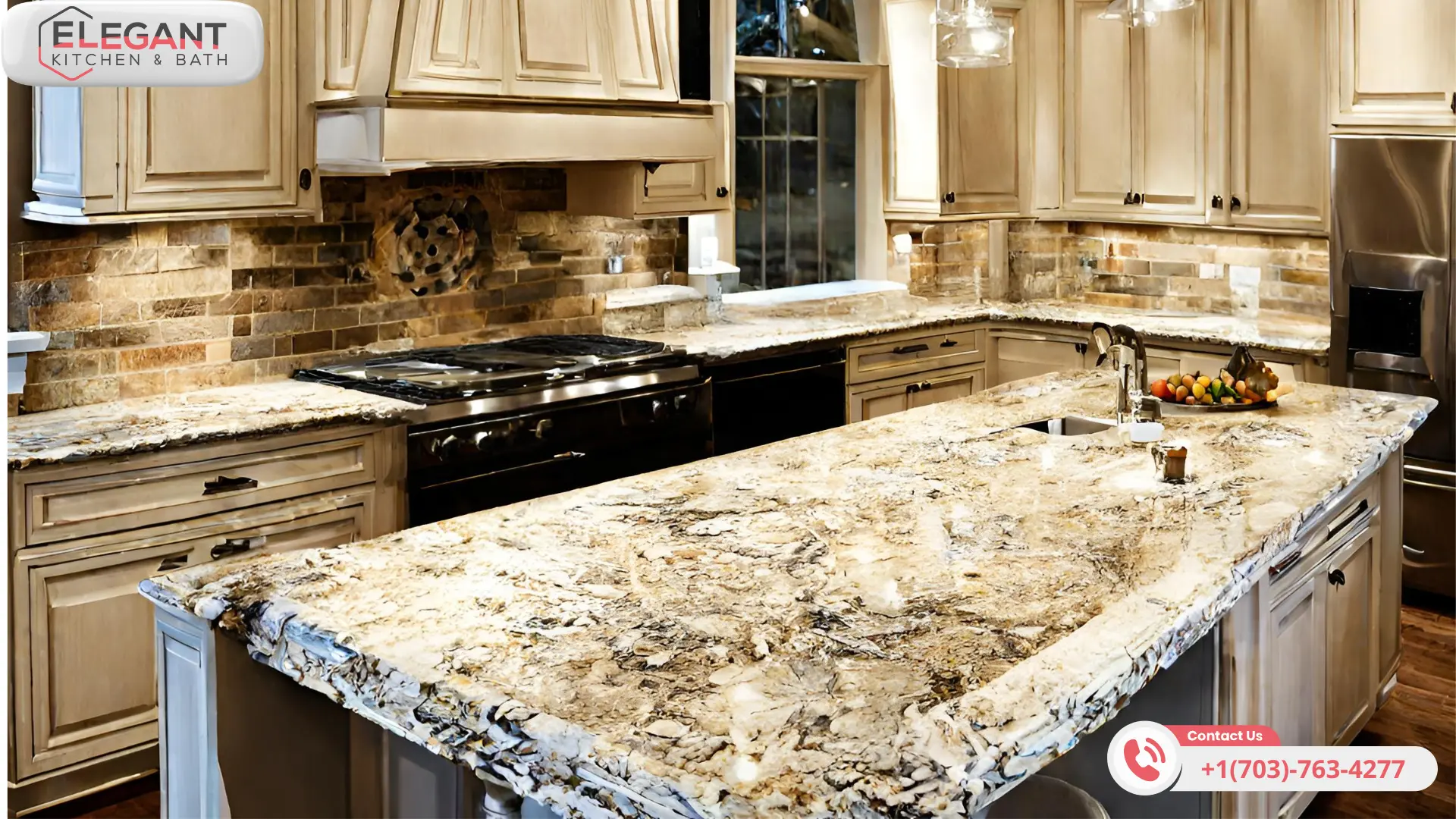
Collaborating With Kitchen Design Professionals
Choosing the right team to bring my custom kitchen design to life is as crucial as the design itself. I entrust my vision, budget, and functional requirements to someone who can translate them into a space that looks and works beautifully.
With the journey already underway, I knew it was time to find a kitchen designer or architect whose work resonates with my style and has a reputation for excellence. Clear communication would be essential—not just in conveying my ideas and limitations but also in understanding their proposals and adjustments.
It’s not merely about sketches and materials; it’s about fostering a collaborative relationship that ensures the entire project flows smoothly, guaranteeing a result that’s not just satisfactory but exceeds my expectations.
This step isn’t just a phase in the process—it’s the foundation upon which the success of my kitchen renovation is built.
Research and Select a Reputable Kitchen Designer or Architect
Finding the right professional to bring my custom kitchen dream to reality started with meticulous research. I delved into portfolios and explored the backgrounds of various kitchen designers and architects, focusing on those whose previous projects and design ethos resonated with my vision for functionality and aesthetics. Choosing a partner whose experience and creative flair would complement my unique needs and aspirations for my kitchen space was paramount.
After compiling a list of prospective designers, I prioritized setting up consultations to discuss my project in detail. These meetings were instrumental in gauging the professional’s understanding and enthusiasm for my vision. During these conversations, I sought to confirm their credentials, evaluate their communication skills, and verify their reputation within the industry through client feedback and reviews. This thorough vetting process ensured my confidence in their ability to flawlessly execute my custom kitchen design.
Communicate Your Vision, Budget, and Requirements Clearly
It was crucial to ensure clear communication with the kitchen designer or architect about their vision, budget, and specific requirements, and they handled this step with precision and care. They articulated what they wanted their kitchen to embody, highlighting their non-negotiable preferences for materials, styles, and functionalities while being upfront about the project’s financial parameters.
This process involved sharing inspirational images and discussing how those concepts could be adapted to fit their space’s unique dimensions and characteristics. They stressed the importance of maintaining a transparent dialogue throughout the design process, allowing for adjustments and ensuring that the evolving design remained aligned with their original vision and budget constraints.
Review and Adjust the Proposed Custom Kitchen Designs
Receiving the initial kitchen designs from my chosen professional was a significant milestone in my project. My immediate task was to examine every detail closely, ensuring that the proposal aligned with my vision and addressed the functional aspects of my space. It was a moment of collaboration, and my feedback could lead to refinement and enhancements.
Adjustments to the design were inevitable, as this iterative process is crucial for achieving the best possible outcome. KFundamentalchanges might include reallocating space for better flow, tweaking materials for a more cohesive look, or even rethinking storage solutions for improved efficiency. Each modification brought us closer to realizing the kitchen of my dreams:
| Design Aspect | Original Proposal | Adjustment |
|---|---|---|
| Island Size | Large, dominating space | Reduced for better movement |
| Countertop Material | Marble | Switched to quartz for durability |
| Cabinet Placement | Perimeter layout | Adjusted for an L-shape to enhance flow |
Ensure a Good Working Relationship for a Smooth Project Flow
Maintaining a positive working relationship with kitchen design professionals is akin to nurturing the seeds of a successful project. The individual prioritized establishing a rapport based on mutual respect and clear, consistent communication. This groundwork facilitated a smoother workflow and fostered an environment where creative ideas could flourish without hindrance, underscoring the project’s collaborative nature.
Emphasizing responsiveness and openness to feedback with the design team was crucial in ensuring the project’s direction aligned with the individual’s vision at every milestone. They found that acknowledging the team’s expertise while confidently voicing their opinions created a balance that propelled the project forward efficiently, minimizing misunderstandings and maximizing their shared goal: to realize a kitchen that embodies their aspirations and the design excellence of the professionals involved.
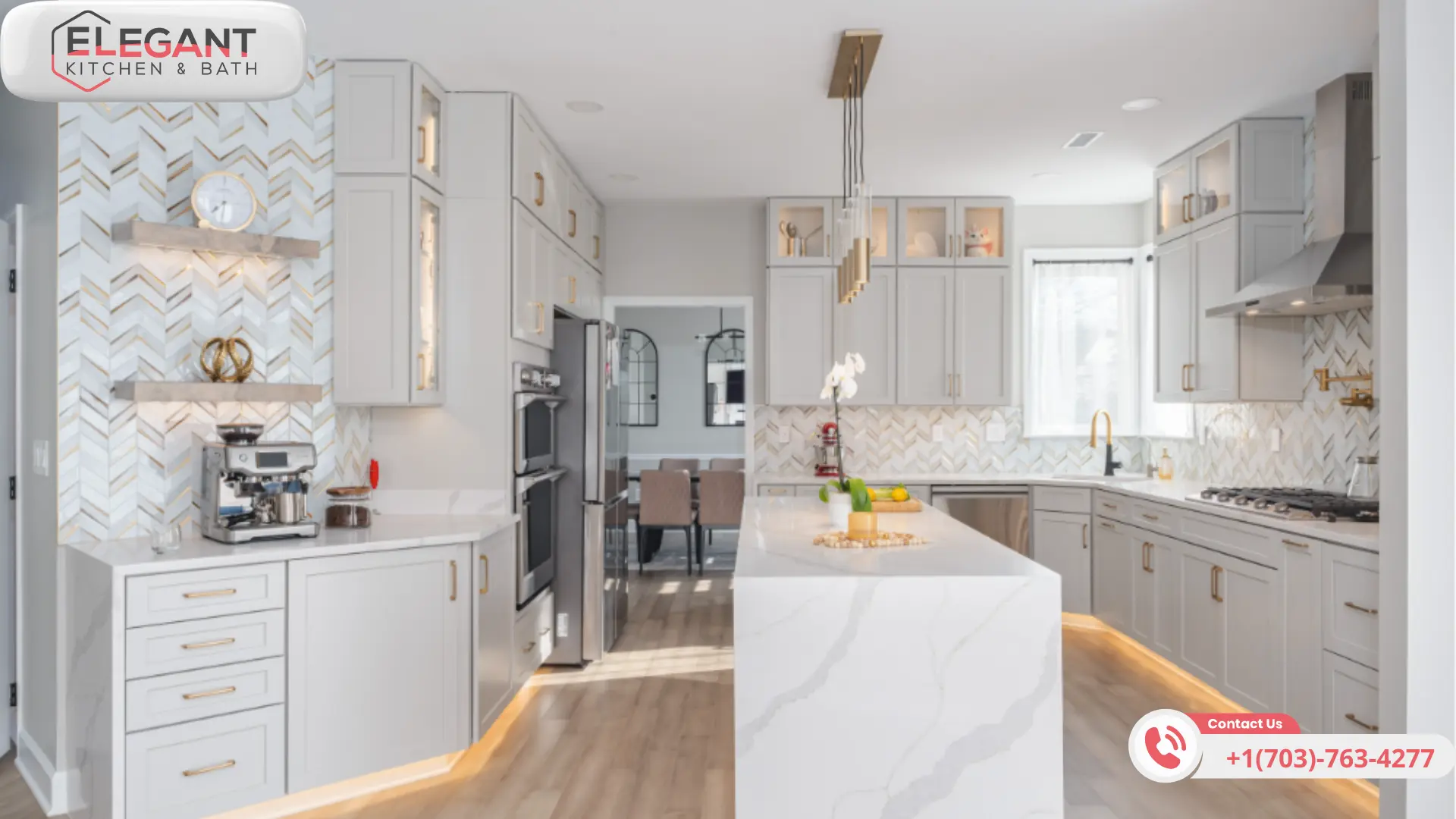
FAQs for Right Custom Kitchen Design
What is the golden rule for kitchen design?
The golden rule of kitchen design is the “work triangle”—an imaginary line drawn between the sink, refrigerator, and stove. These three elements should be close enough to move between easily but not so close that the kitchen feels cramped. Aim for each leg of the triangle to be between 4 and 9 feet, with the total of all three legs not exceeding 26 feet. This efficient layout makes cooking and cleaning much easier.
Where do I start when planning a kitchen?
Start by evaluating how you currently use your kitchen and what improvements you’d like to see in layout, storage, appliances, etc. Measure your space and sketch different floor plans to visualize the possibilities. Research different cabinet styles, countertop materials, flooring options, and appliances to understand the cost and what you like aesthetically. Set a realistic budget, then consult a kitchen designer or remodeling professional to refine your plans.
Is it cheaper to build your kitchen?
Building and installing your kitchen cabinets and countertops can save you money on labor costs, typically accounting for 50% or more of a kitchen remodel. However, achieving professional-looking results requires a significant time investment and a high level of DIY skill. Prefabricated or RTA (ready-to-assemble) cabinets offer a good middle ground, costing less than fully custom cabinets while still allowing for some customization.
How much does it cost to build a kitchen from scratch?
The cost of building a kitchen from scratch varies widely depending on the size of the space, quality of materials, and scope of the project. A full kitchen remodel costs between $12,000 and $35,000, with high-end remodels costing $50,000 to $100,000 or more. To keep costs down, consider making minor layout changes rather than moving plumbing and electrical, choosing mid-range finishes, and doing some of the work yourself.
How do you make a kitchen look expensive?
Focus on key elements like lighting, hardware, and backsplash tile to give your kitchen a high-end look without breaking the bank. Install under-cabinet LED lighting to brighten the space and highlight beautiful countertops. Choose sleek; modern cabinet pulls and knobs in a finish like brushed nickel or matte black. Add a luxe backsplash using large-format tiles or a striking material like marble or stainless steel. Paint cabinets a rich color like navy blue or charcoal gray, and finish the look with stylish accessories and appliances.
What is the biggest expense in a kitchen remodel?
Cabinetry is typically the biggest expense in a kitchen remodel, accounting for 25-30% of the total budget. Custom cabinets are the most expensive option, followed by semi-custom and stock cabinets. Countertops are another significant expense, with materials like natural stone, quartz, and solid surfaces costing $50 to $200 per square foot installed. Appliances can also take a big bite out of your budget, especially if you opt for professional-grade models.
What is the most expensive thing in a kitchen remodel?
The most expensive elements of a kitchen remodel are typically custom cabinetry, high-end countertops like marble or quartzite, and professional-grade appliances. Custom cabinets can cost $20,000 or more easily, while luxury countertops run $200 per square foot or higher. A pro-style range alone can set you back $10,000 or more. If you want to splurge on just one element, consider investing in a standout backsplash or a show-stopping island with premium finishes.
What is the most expensive part of a kitchen?
The most expensive part of a kitchen is usually the cabinetry, followed closely by countertops and appliances. These three elements combined often account for 60-70% of the total kitchen remodel cost. Luxury materials like custom wood cabinets, natural stone countertops, and pro-style appliances drive up costs significantly. Installation and labor are also major expenses, particularly if you change the layout or move plumbing and electrical lines. Proper budgeting and careful selection of materials can help keep costs under control.
Do I need an architect for a new kitchen?
It depends on the scope of your kitchen remodel. If you are making significant layout changes, moving plumbing/electrical, or removing load-bearing walls, you will likely need an architect or structural engineer to provide drawings for permits. However, a kitchen designer can handle the plans for a more basic kitchen update with the same layout. The key is to first check with your local building department to determine what permits are required in your specific situation.
Who draws up kitchen plans?
1. Kitchen Designers—Many cabinet retailers and home improvement stores, such as Lowe’s, Home Depot, and IKEA, offer kitchen design services. Their designers can create 3D layouts showing the cabinets and appliances.
2. Interior Designers – An interior designer can create a complete kitchen design, specifying all materials, finishes, cabinets, and appliances.
3. Architects – For major kitchen remodels requiring layout changes or structural work, an architect may be needed to create the plans and ensure everything meets building codes.
4. Contractors—Some design-build contractors, like Elegant Kitchen and Bath, have an in-house designer who creates kitchen plans.
The quality of design varies significantly between contractors.
How much does a professional kitchen design cost?
Kitchen design fees vary based on the professional, the scope of the project, and your location. Here are some rough estimates:
– Kitchen designers at home improvement stores like Lowe’s or Home Depot often provide free basic design services, expecting you to purchase their cabinets and materials.
– Independent kitchen or interior designers may charge $50-$200 per hour, or 10-20% of the total project cost, for their design services.
– Architects typically charge 8-12% of the total construction costs for a major kitchen remodel requiring structural changes. A $100,000 renovation would cost $8,000-$12,000 in design fees.
Design-build firms often bundle design fees into their overall project costs, typically 15-20% higher than hiring an architect and contractor separately.
Does Elegant Kitchen and Bath help in designing kitchens?
Yes, We offer kitchen design services. You can schedule a consultation with our kitchen designer either in-store or online. They will take measurements, create a 3D rendering of your kitchen, and provide a quote for cabinets and installation. The design service is free with estimates, but you must purchase the cabinets and materials from Elegant Kitchen and Bath.
How many hours does it take to design a kitchen?
The time required to design a kitchen depends on the complexity of the project and the professional doing the work. Here are some estimates:
– A kitchen designer at a home improvement store can often create an initial 3D design in a few hours after taking measurements and discussing your preferences.
– An independent kitchen or interior designer may spend 20-30 hours creating a complete design package, including floor plans, elevations, renderings, and material selections.
– An architect may spend 40-50 hours designing a kitchen for a major remodel, including construction drawings and coordination with structural engineers and contractors.
– A homeowner using online design tools like IKEA or Lowe’s can spend anywhere from a few hours to a few weeks designing their kitchen layout, depending on their skill level and the intricacy of the design.
In summary, whether you need an architect for your kitchen remodel depends on the scope of work. For simple updates, a kitchen designer can create the necessary plans. However, an architect or engineer may require major structural, plumbing, or electricity renovations. Expect design fees to range from free to over $10,000, depending on the professional and complexity. The design process can take anywhere from a few hours to several weeks.
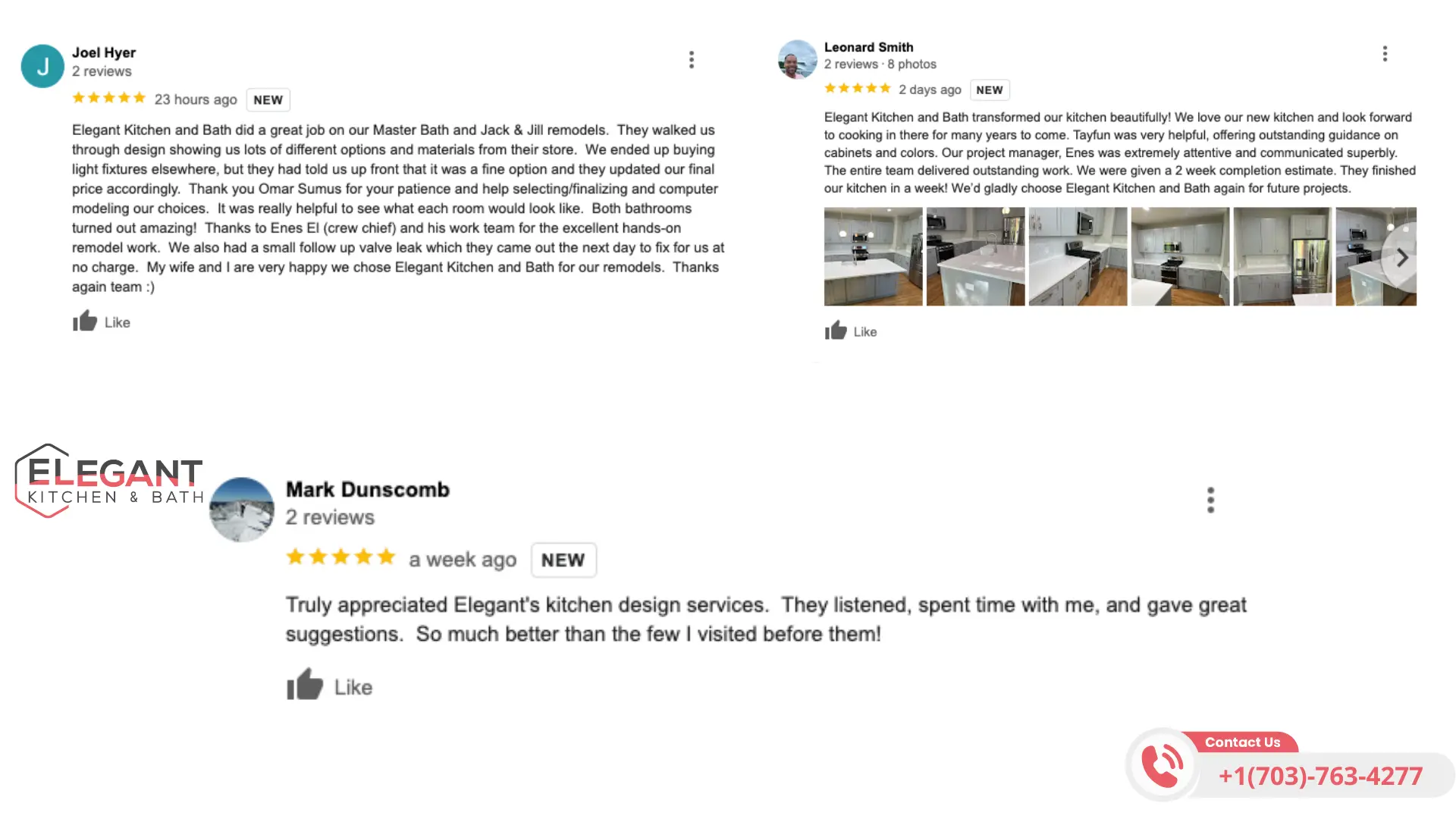
Discover Local Kitchen Remodeling Excellence with Our Happy Customers
Joel Hyer:
Joel Hyer praises Elegant Kitchen and Bath for their excellent work on his Master Bath and Jack & Jill remodels. The team walked them through the design process, showing various options and materials. Although they purchased light fixtures elsewhere, Elegant Kitchen and Bath accommodated this and adjusted the final price. Joel appreciates Omar Sumus’s patience and help selecting, finalizing, and computer modeling their choices. The remodeled bathrooms turned out amazing, thanks to the hands-on work by Enes El and his crew. When a small valve leak occurred post-remodel, the team promptly fixed it at no charge. Joel and his wife are thrilled with their decision to choose Elegant Kitchen and Bath for their remodels.
Leonard Smith:
Leonard Smith is delighted with Elegant Kitchen and Bath’s beautiful transformation of their kitchen. Tayfun provided exceptional guidance on cabinets and colors, while project manager Enes was attentive and communicated superbly. The team delivered outstanding work, completing the kitchen in just one week, surpassing the initial two-week estimate. Leonard and his family look forward to cooking in their new kitchen for years and would gladly choose Elegant Kitchen and Bath for future projects.
Mark Dunscomb:
Mark Dunscomb expresses his appreciation for Elegant’s kitchen design services. The team listened attentively, spent ample time with him, and provided excellent suggestions. Mark found their design services far superior to those of the few other companies he had visited previously.
Are You Ready to Elevate Your Home with the Best Kitchen Remodeling Contractor in Virginia?
Join the ranks of our esteemed clients in Virginia, like Joel, Leonard, Mark, Kevin, Kifah, and Maria, who turned to us for their home renovations. When searching for kitchen remodeling in Virginia, look no further than Elegant Kitchen and Bath reviews. We pride ourselves on delivering tailor-made renovation solutions with an unwavering commitment to excellence. As your kitchen remodeling contractor, we’re excited to bring our expertise to your doorstep. Connect with us for a personalized consultation, and embark on a journey to transform your home into the sanctuary you deserve.
Conclusion
To choose the right custom kitchen design, you must evaluate your kitchen’s size, shape, storage, and lighting while acknowledging your lifestyle and budget. Selecting durable materials and finishes, integrating appliances that match your lifestyle demands, and collaborating with experienced kitchen design professionals ensure your vision is translated into an aesthetically pleasing and highly functional space.
Elegant Kitchen and Bath offers kitchen remodeling, bathroom remodeling, basement remodeling, and home addition remodeling services across a broad area, including
Herndon, Chantilly, Centreville, Reston, Sterling, GreatFalls, Ashburn, Fairfax, McLean, Manassas, Haymarket, Burke,
Vienna, Falls Church, Annandale, Springfield, Alexandria and Arlington.
Ready to transform your kitchen with a licensed contractor?
Visit Elegant Kitchen and Bath to start your journey toward your modern kitchen today.
